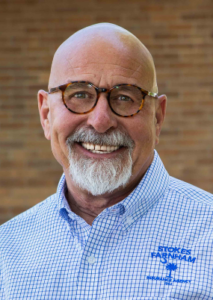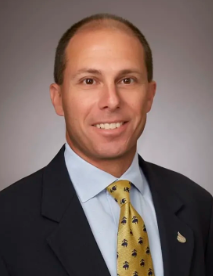Wanted in South Carolina: $1 million in liquor liability coverage at an affordable premium to prevent closure of establishment.
That’s the type of advertisement one can imagine bars and bistros across the Palmetto State running this fall, as the full impact of state laws become painfully clear. The mandatory liquor insurance requirement, along with South Carolina’s joint-and-several tort statute that can hold a dram shop liable for millions in damages – plus the result of some recent high-profile lawsuits – has had insurance agents and brokers scrambling to find coverage for some of the state’s favorite watering holes and restaurants.
“It’s just out of hand. It’s a crazy thing,” said Tom Bates, market president of the Stokes-Farnham Insurance Agency in Greenville. “I’ve tried to go to the standard market first, but if you have any kind of hair on your account, you have to go to the excess and surplus market.”

Bates told the story of a locally-owned, popular wing restaurant. Liquor sales are only about 30% of the restaurant’s total sales, well below the 50% alcohol sales threshold that would trigger the requirement for $1 million in liability coverage. But because the eatery had a claim recently, carriers have become leery. Five standard carriers have declined to write a policy, and the wing place can’t afford the much-higher E&S lines’ premiums.
The wing shop is now about to go out of business, Bates said.
Others across the state are in same position, according to local news reports, insurance leaders and restaurant trade representatives. Some establishments have said their premiums have more than tripled, to as much as $350,000 a year for a relatively small bistro, said Susan Cohen, president of the South Carolina Restaurant and Lodging Association. News reports have quoted other bars as saying that their rates increased by 10-fold.
The issue began in 2017, when the South Carolina General Assembly mandated the million-dollar minimum following a car crash by a drunken driver that killed two people and severely injured a police officer. Neither the driver nor the drinking establishment had liability insurance, leaving the officer’s county employer to pay the medical expenses.
Few at the time realized what an impact the law would have on mom-and-pop bars and restaurants. The $1 million minimum liquor liability coverage is not unusual. Several states, including Florida, have statutes requiring that much or more.
But in South Carolina, insurance had never been required by law before 2017. Some dram shops carried it, others did not.
“Any time you have coverage that was an option that then becomes a mandated coverage by law, it’s either going to keep you in business or put you out of business,” Bates said. “And it’s putting a lot of people out of business right now.”
The hospitality industry also has long complained about South Carolina’s joint-and-several statute, which can hold a business mostly responsible for damages even if it was only peripherally involved. Some states have modified their liability and tort laws. The Florida Legislature this year, for example, drastically limited what a plaintiff can recover in a lawsuit if the plaintiff is shown to be partly responsible.
South Carolina’s joint liability law was highlighted this year by two well-publicized cases. In June, a woman was charged with felony DUI and reckless homicide after she crashed her car into a Charleston woman who had just been married. The driver’s blood-alcohol level was three times the legal limit, authorities said.
Four drinking and eating establishments are now being sued for their role in providing alcohol to the driver, although it has yet to be shown which bar actually caused the intoxication, according to Cohen and local news reports.
Also this year, the famous saga of convicted South Carolina attorney Alex Murdaugh and his family included a convenience store chain agreeing to pay $15.5 million to settle a civil lawsuit. Parker’s Kitchen, near Charleston, was shown to have sold beer to Murdaugh’s underage son in 2019. The youth, Paul Murdaugh, showed the identification card of his similar-looking, older brother. Paul then crashed a boat into a bridge, killing a 19-year-old girl who was thrown from the craft. Three insurers will pay the bulk of the settlement.
The attorney for Parker’s owner said the settlement was necessitated by South Carolina’s joint-and-several liability law.
“The application of the joint and several liability laws in South Carolina meant that, if Parker’s was found even 1% at fault, it would have paid for the entirety of any verdict rendered against the Murdaugh family,” attorney PK Shere told the Associated Press in July. “The unfairness of that caused Parker’s insurance carriers to resolve these suits to avoid paying the likely award intended to punish Alex Murdaugh.”

And litigation is on the rise. Perkins Coie, a law firm that tracks class-action lawsuits, said in August that 214 suits were filed against food and beverage companies in 2022 and 101 were filed in the first six months of this year. In 2010, just 45 suits were filed, the Associated Press reported.
All of the above appear to have created a perfect storm in South Carolina, making a number of insurance companies non-renew many policies, raise premiums for others, or pull back from the market altogether.
“The joint-and-several liability problem – it’s not just about bars and restaurants now. It’s also about the homeowner who serves someone a glass of wine at their home,” Cohen said. Weddings and concert venues also have been affected.
“It affects multiple lines of insurance,” said Frank Sheppard, president of the Independent Insurance Agents and Brokers of South Carolina.
The plight of bars and restaurants may earn little sympathy from elected leaders in a Bible-Belt state where, even though the majority of lawmakers are considered pro-business Republicans, trial lawyers have a strong influence, Sheppard explained. On the other hand, coastal Carolina, with its famous Myrtle Beach and history-rich Charleston, depend heavily on tourist-generated revenue at bars and restaurants.
Food and beverage establishments have tasted a little bit of hope lately.
The Alcohol Beverage Licensing Division of the state Department of Revenue this month posted an advisory opinion, noting that a liquor liability policy providing total, aggregate coverage of $1 million – not $1 million per incident as many had thought – would satisfy the requirements of the 2017 law. That could make it somewhat more affordable for smaller establishments to afford coverage, Sheppard and Bates said.
And a bill was introduced in the state legislature earlier this year that would significantly alter the joint-and-several liability landscape. Senate Bill 533, with multiple sponsors, would allow juries to apportion fault in more cases. The bill did not make it past a Senate committee last spring, but it and a companion House bill can be considered when lawmakers convene again in 2024.

“We wish the Legislature would do something about it,” said Scott Moseley, with Irmo Insurance Agency, near Columbia. “Otherwise, South Carolina is going to be an outlier among all the states.”
Lawmakers this year did ask the state Department of Insurance to look into the business community’s concerns. The DOI in June held a data call, seeking information from carriers on why liability insurance costs have soared. The data was still being analyzed as of last week and the department does not yet have an estimate on when a report will be completed, a DOI spokesperson said.
Even if more palatable liability laws or regulations are put in place, those may not be enough to bring down liability premiums, Bates, the Greenville agent, said. He has called for a type of state-backed, assigned-risk fund or association, perhaps similar to residual workers’ compensation insurance funds that cover hard-to-insure businesses in some states, or wind associations that cover vulnerable homeowners that can’t find coverage in the primary market.
“The state needs to come up with something,” Bates said.
Was this article valuable?
Here are more articles you may enjoy.


 Cyber Breach Affected 750,000 Canadian Investors, Regulator Says
Cyber Breach Affected 750,000 Canadian Investors, Regulator Says  California Governor Seeks $200M to Replace EV Tax Credits Cut by Trump
California Governor Seeks $200M to Replace EV Tax Credits Cut by Trump  Palantir Poaching Suit Called ‘Scare’ Tactic by Ex-Employees
Palantir Poaching Suit Called ‘Scare’ Tactic by Ex-Employees  Billionaire NFL Owner Suing Over Billboards Near His SoFi Stadium
Billionaire NFL Owner Suing Over Billboards Near His SoFi Stadium 